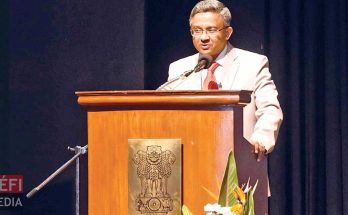The 10-member ASEAN leaders signed a declaration on November 22, in Kuala Lumpur to establish a formal economic community. The community will attempt to create freer movement of trade and capital in an area of 625 million people with a combined economic output of USD 2.6 trillion.
“In practice, we have virtually eliminated tariff barriers between us,” Malaysia’s Prime Minister Najib Razak said. “Now, we have to assure freer movements and removal of barriers that hinder growth and investment,” he said. ASEAN Economic Community (AEC) would comprise a single market and production base, a highly competitive economic region, a region of equitable economic development, and a region fully integrated into the global economy.
Some of the focus areas of cooperation of the AEC include human resources development and capacity building, recognition of professional qualifications, closer consultation on macroeconomic and financial policies, trade financing measures, enhanced infrastructure and communications connectivity, integrating industries across the region to promote regional sourcing, enhancing private sector involvement for the building of the AEC and so on.
The AEC is expected to transform ASEAN into a region with free movement of goods, services, investment, skilled labour, and freer flow of capital. One of the major developments in the recently concluded ASEAN summit was the formal announcement of the establishment of the ASEAN Community, inclusive of the AEC, ASEAN Political-Security Community (APSC) and the ASEAN Socio-Cultural Community (ASCC). These communities will come into effect from December 31, 2015.
Though the establishment of the AEC had been anticipated for years it is still a significant step in the regional integration of Southeast Asia. “Our ASEAN way has guided us and will continue to be our compass as we seek to realise a politically cohesive, economically integrated, socially responsible and a truly people-oriented, people-centered rules-based ASEAN,” Mr Razak had said.
Comparisons with EU
The integration of ASEAN economies intends to help the region compete with giants China and India. It would create the world’s seventh-largest single market. When compared to the European Union, the AEC is culturally and politically more diverse with various systems of government including communism.
As the level of development among ASEAN countries is varied, it is unlikely that members of ASEAN would agree to a monetary union. The intra-ASEAN trade has increased over the years as tariff barriers were gradually removed to fulfill the countries’ obligations leading up to the AEC.
According to some analysts, the long-term risk that AEC possesses is that of becoming a trade block where it is free for internal movement of goods and services but not free for trading outside of the block. It is feared that like the EU, over time AEC may erect barriers preventing goods and services from entering the region from outside the area. This could become harmful for the region as it will prevent integration into the wider global value chain. At a time when the world markets are working towards getting integrated, any form of protectionist policies by ASEAN could dent the region’s progress in the long-term.
Author Profile
- India Writes Network (www.indiawrites.org) is an emerging think tank and a media-publishing company focused on international affairs & the India Story. Centre for Global India Insights is the research arm of India Writes Network. To subscribe to India and the World, write to editor@indiawrites.org. A venture of TGII Media Private Limited, a leading media, publishing and consultancy company, IWN has carved a niche for balanced and exhaustive reporting and analysis of international affairs. Eminent personalities, politicians, diplomats, authors, strategy gurus and news-makers have contributed to India Writes Network, as also “India and the World,” a magazine focused on global affairs.
Latest entries
 DiplomacyApril 10, 2024Diplomat-author Lakshmi Puri pitches for women power at LSR
DiplomacyApril 10, 2024Diplomat-author Lakshmi Puri pitches for women power at LSR India and the WorldApril 6, 2024UN envoy pitches to take India’s solutions to the world stage
India and the WorldApril 6, 2024UN envoy pitches to take India’s solutions to the world stage CultureApril 5, 2024Youth in Diplomacy: Making it Matter with LSR Model UN 2024
CultureApril 5, 2024Youth in Diplomacy: Making it Matter with LSR Model UN 2024 India and the WorldMarch 28, 2024India to China: Normalization of troops deployment imperative for restoring ties
India and the WorldMarch 28, 2024India to China: Normalization of troops deployment imperative for restoring ties








